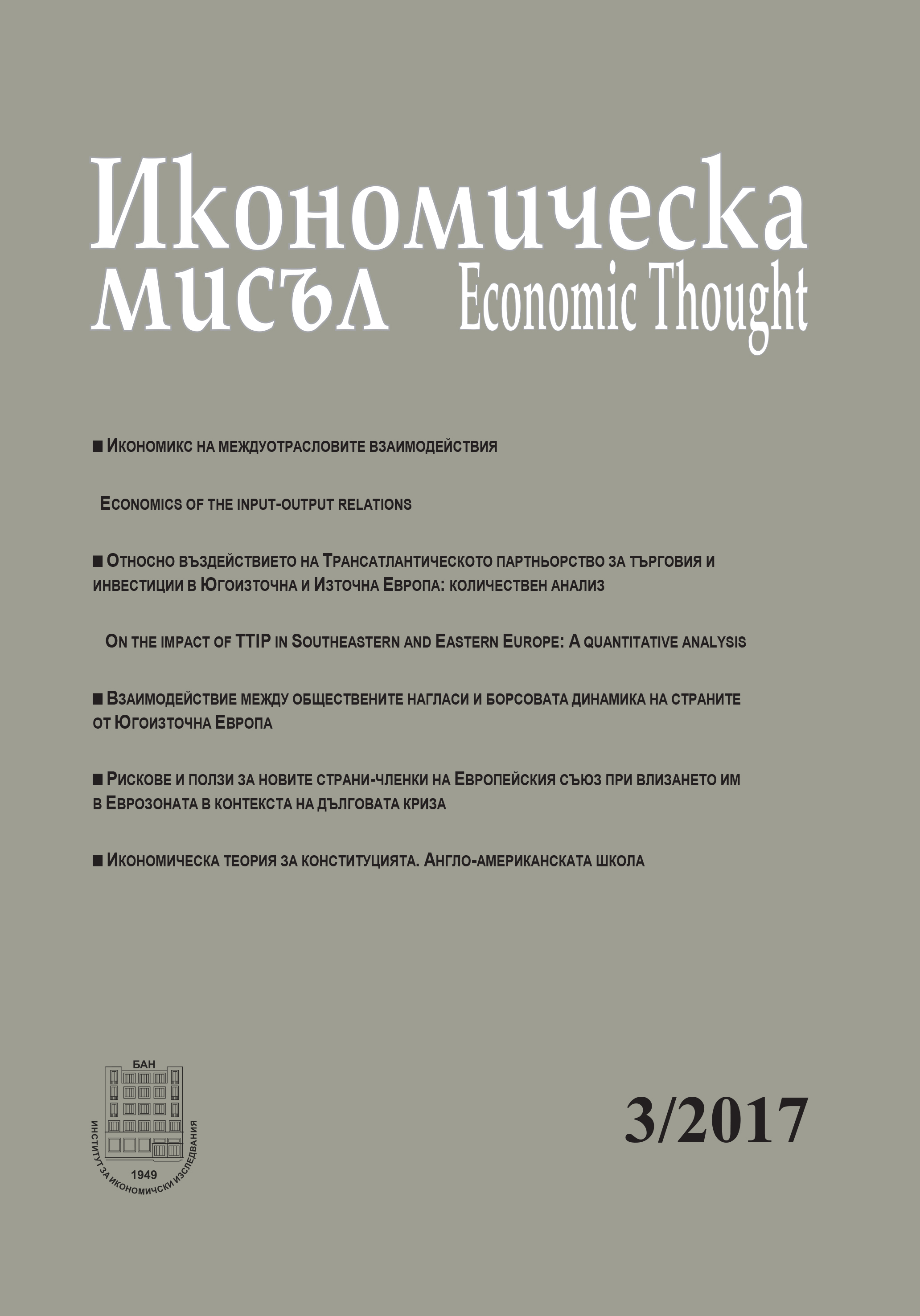Относно въздействието на Трансатлантическото партньорство за търговия и инвестиции в Югоизточна и Източна Европа: количествен анализ
On the impact of TTIP in Southeastern and Eastern Europe: A quantitative analysis
Author(s): Mario Larch, Yoto YotovSubject(s): Economy, National Economy
Published by: Институт за икономически изследвания при Българска академия на науките
Keywords: Structural Gravity Modeling; TTIP; Southeastern and Eastern Europe
Summary/Abstract: Despite great general interest and significant controversy surrounding the completion and the potential impact of the Transatlantic Trade and Investment Partnership (TTIP), little attention has been devoted to the impact of this trade megadeal on the EU-member and non-member countries in Southeastern and Eastern Europe. To fill this gap, the objective of this paper is threefold. First, we want to describe the standard quantitative methods that are used to analyze the impact of trade liberalization. Second, we offer a detailed discussion of the decomposition of the transmission channels through which an initial trade liberalization shock (e.g. the formation of TTIP) will affect consumers, producers and total welfare in member countries as well as outsiders. Finally, throughout the analysis, our focus will be on the countries in Southeastern and Eastern Europe, including member countries (e.g. Bulgaria) and non-member countries (e.g. Macedonia). Our findings suggest that, while TTIP will lead to gains for all Southeastern and Eastern European TTIP member countries, their trade costs with the US are still high. Further Southeastern and Eastern European TTIP outsiders will lose, but losses can be mitigated by additional trade with Southeastern and Eastern European TTIP member and other closer Southeastern and Eastern European countries. Despite great general interest and significant controversy surrounding the completion and the potential impact of the Transatlantic Trade and Investment Partnership (TTIP), little attention has been devoted to the impact of this trade megadeal on the EU-member and non-member countries in Southeastern and Eastern Europe. To fill this gap, the objective of this paper is threefold. First, we want to describe the standard quantitative methods that are used to analyze the impact of trade liberalization. Second, we offer a detailed discussion of the decomposition of the transmission channels through which an initial trade liberalization shock (e.g. the formation of TTIP) will affect consumers, producers and total welfare in member countries as well as outsiders. Finally, throughout the analysis, our focus will be on the countries in Southeastern and Eastern Europe, including member countries (e.g. Bulgaria) and non-member countries (e.g. Macedonia). Our findings suggest that, while TTIP will lead to gains for all Southeastern and Eastern European TTIP member countries, their trade costs with the US are still high. Further Southeastern and Eastern European TTIP outsiders will lose, but losses can be mitigated by additional trade with Southeastern and Eastern European TTIP member and other closer Southeastern and Eastern European countries.
Journal: Икономическа мисъл
- Issue Year: 2017
- Issue No: 3
- Page Range: 54-73
- Page Count: 20
- Language: Bulgarian

